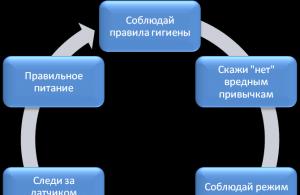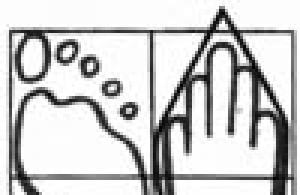Which just did not set speed records on a car. The interest to conquer the track, probably, has always been in the blood of racing fans, from the very moment the cars appeared. And many succeeded.
Absolute result
So, before talking about all kinds of speed records on a car (of which there are many), it is worth mentioning the most important result. The maximum figure was reached in 1997, on October 15th. Then a new, absolute and to this day unconquered speed record for a car was set. 1229.78 km / h - the arrow reached this mark on the speedometer. Andy Green, an Englishman and fighter pilot, became the conqueror of the track. The record was set in the desert The car, of course, was not ordinary, but jet - Thrust SSC.
The track, the length of which was 21 kilometers, was marked at the bottom of a dried-up lake located in the Black Rock Desert. Andy's car was powered by two powerful, turbofan power units from " Rolls-Royce". Each motor was equipped with forced draft. AND general power motors reached an incredible figure - 110,000 Horse power. It is not surprising that Green managed to accelerate to such a mark.
"Pioneers"-record holders
And now you can delve into other topics. So, the first world speed record on a car equipped with a motor internal combustion, was established by a man like Emile Levassor. This was in 1985. Then the Paris-Bordeaux race took place. In fact, it was the first speed competition! And Emil won them. His phrase, which he said after the races, is widely known: “It was crazy! I did up to thirty kilometers an hour!” Of course, at that time, at the end of the 19th century, the figures were indeed stunning. True, Emil also died because of his love for racing. In 1987, during a speed competition, he had an accident while trying to avoid a dog. He soon died due to his wounds. But his speed record in a car with an internal combustion engine has forever remained in history.
The following results have been officially recorded. In 1898, a speed of 63.149 km / h was reached. The motorist was Count Gaston de Chasselus-Loba. He then drove an electric car designed by Charles Janto. By the way, this was the first officially registered record.

Distance racing
Already at the end of the 19th century, speed competitions began to be held, in which motorists had to overcome a certain distance. Who was the first, he won, everything is logical. And the first was the 100-kilometer distance. She was conquered by Camille Zhenatzi, a Belgian motorist. And it was April 29, 1899. He also drove an electric car with 40 horsepower. The maximum he reached was 105.8 km / h.
The next distance was 200 kilometers. She was conquered in 1911. And then R. Burman became the winner. It is not difficult to guess that he was driving a car from the Benz company. His maximum car speed record was incredible - 228 km/h! What can I say, not all modern machines some brands can work out such a maximum.
300 kilometers was first conquered by H. O. D. Sigrev. This was in 1927. And its maximum stopped at around 327.8 km / h. Then, in 1932, there was a 400 km race. Malcolm Campbell managed to win. And it was 408.6 km / h.
John Aiston won the 500 km race in a Rolls-Royce Aiston in 1937. He “squeezed” out of the car a maximum of 502.4 km / h. And finally, a thousand kilometers. Garry Gabelich covered this distance in 1970, on October 23rd. His car was rocket car called "Blue Flame". amounted to 1014.3 km / h. Interestingly, the car was 11.3 meters long. The race was held on a dry salt lake called Bonneville.

Sound speed
And once it was overcome. This was first done by a man named Stan Barrett. This is a professional stuntman from America, who at the time of the event was 36 years old. He set a record in a 3-wheeler. It was called the Budweiser Rocket. By the way, there were two of them. main motor- LRE, having a thrust of 9900 kgf. And the second - RDTT. He had a thrust of 2000 kgf. It was installed in the car in order to use additional power if the main one was not enough to overcome the declared speed.
The race took place at an air base in California in 1979. By the way, talking about speed records on a car, it should be noted that this one was just not registered by the FIA. And all because the rules of the organization say: to fix the result, you need to spend two races in two different directions. This is done to eliminate the slope of the track and the influence of the wind. Stan Barret refused it. He said the record had already been set.
For a thousand miles
So far, no one has managed to conquer the speed limit of 1000 miles / hour. This, it is worth clarifying, is 1609 kilometers per hour. But people who deal with cars do not lose their enthusiasm. They rightly believe that everything is possible, and this too. The designers of the Bloodhound SSC, for example, have a plan for setting a new record. Most likely, the car intended for the race will be equipped with three power units. The first will be a hybrid rocket engine. The second will be the Eurojet EJ200 jet unit, which is used on a fighter aircraft called And the third - V-shaped motor with 8 cylinders from the Jaguar concern. It will, of course, run on gasoline. But used this engine will be used to drive the pumps that pump fuel to the rocket motor and activate the onboard electric generator.

Other categories
Many women also set speed records in a car. Most best result- this is 843.3 km / h. It was reached by an American girl named Kitty Humbleton. And she set a record in 1976, in December. The engine power of her car was 48,000 “horses”.
The maximum that could be achieved by racers driving a car with a steam engine is 223.7 km / h. There were 12 boilers in the car, where the water was heated by combustion. natural gas. Approximately 40 kilograms of water were evaporated in the boilers every minute in this way. The power of the installation was approximately 360 liters. from.
And what about the speed record on a production car? Naturally, the Bugatti Veyron hypercar is the best in this regard. Super Sport". His figure is 431.072 kilometers per hour! But this is not the limit. After all, the fastest and most dynamic passenger car designed to drive on the roads has become ... Ford Badd GT! He was able to reach the mark of 455 km / h. And this is more than the notorious Bugatti.

Diesel "champions"
Cars that run on diesel engines are often underestimated. So, all stereotypes at the moment destroys JCB Dieselmax. This is not consuming gasoline, but diesel fuel. On it, under the guidance of the same Andy Green, they set a record of 563.418 km / h. It happened in 2006. It is worth recalling that a similar test was conducted in 1973. The result of that year was an order of magnitude smaller - 379.5 km / h.
The fastest stock car working on diesel fuel is a German representative. And this is the BMW 330 TDS. Its maximum is 320 km/h. The unit of this model has 6 cylinders and a volume of three liters. Plus, of course, turbocharging. Motor power is 300 "horses". And the consumption, by the way, cannot but rejoice - only 8 liters per 100 km.

Other results
Above were the speed records by car over the years. As you can see, there are many good results managed to achieve not even in the XXI century. And indeed, it is! For example, recognized released in 1992 year Audi S4. This model is capable of reaching 418 km/h. In any case, this result was recorded during the race on the dry lake Bonneville. Under the hood of this all-wheel drive car was a 5-cylinder turbocharged engine. Its power was modified to 1100 hp. from.
And there was also a speed record for a car with wheel drive. It amounted to 737.4 km / h. And finally, it is impossible not to say about the speed result, which was achieved on a motorized log - 76.625 km / h! It was this indicator that the structure made of cedar logs and automotive parts. The record, by the way, is fresh - it was recorded in 2016.

Russian indicators
Naturally, speaking on such a topic, one cannot help but note the speed record for a car in Russia. On the territory of our country, Lada and Volga are produced - they are still as far away as possible. But still there is some interesting record in history.
It was installed by such people as Oleg Bogdanov, Vladimir Solovyov and Viktor Panyarsky - the team of the magazine "Behind the Wheel". Men in a VAZ-2109 car crossed the whole of Europe in 45 hours and 30 minutes. The start was in Moscow, on Manezhnaya Square. And the “jet trip” ended in Lisbon, not far from the Belen tower. The idea to make such a run did not come spontaneously. It was a response to the Portuguese initiative. In 1986, two Portuguese journalists arrived in the Russian capital from Lisbon. They covered the entire route in 51 hours and 30 minutes. Soviet journalists accepted the challenge and, one might say, won the unvoiced argument.
And there was another case in 2009. A resident of Samara on his "Lada-21099" reached a speed of 277 km/h! The most interesting thing is in a traffic jam, during rush hour, at about nine in the morning! The guy exceeded the speed limit by 217 kilometers. Also a kind of record. Possible, probably, only in Russia.
Special attention in traffic rules is traditionally paid to traffic in settlements. The speed of movement in cities and towns is always significantly lower than on highways. This restriction easy to explain. Pedestrians are very vulnerable to accidents, they are not protected by the airbag and the metal frame of the car. Even a small speed of 80 km/h by automobile standards can be fatal for a pedestrian or lead to extremely serious injuries.
traffic speed
 Traffic rules regulate in detail the speed limit for any type of car. The main categories are the following parameters:
Traffic rules regulate in detail the speed limit for any type of car. The main categories are the following parameters:
- terrain;
- Type of vehicle - truck / passenger car;
- The presence of dangerous goods in the car;
- The presence of people in the car - there is a movement without passengers or there are people in the vehicle (especially children or groups of people).
In addition, the maximum speed limit can be adjusted by additional road signs. You can not ignore them and allow speeding.
The rules are based on two important concepts:
- The first concept is the stopping distance of vehicles. The concept is derived exclusively from physical laws. The braking distance is the distance traveled by the vehicle with the brake pedal depressed. The distance is affected by the speed, the surface of the roadway, the weight of the car.
- The second concept is a stop way. The concept refers to the distance in meters, which a car will pass to a complete stop from the moment the driver detects a dangerous situation. As it is not difficult to guess, the stopping distance consists of two components - the speed of the driver's reaction to dangerous situation plus the stopping distance. Many factors affect the rate of a reaction. These factors include visibility and a relatively subjective concept - the psycho-physiological state of the driver.
If there is poor lighting or fog on the roadway, all this will lead to a slow reaction of the driver in case of danger. In addition, the driver himself may not be concentrated (for example, due to lack of sleep), which will similarly lead to an increase in stopping way. Safety depends on concentration - personal, pedestrians, and other drivers. If you approach the issue inattentively, drive with violations, for non-compliance with traffic rules, you should prepare for the payment of a fine or even criminal punishment.
Based on physical laws, statistics and international practice, the traffic rules have developed speed limits for different terrains and conditions.
Passenger car speed
Passenger cars are the most common vehicles, almost every family has them.
The standard restrictions for "cars" are the following frames:
- The speed limit in the village is 60 km/h;
- Maximum speed outside the city ( settlements) - 90 kilometers / hour;
- The speed limit on highways and highways is 110 km/h.
IN this list there is one more important nuance. In yard areas, that is, directly in residential areas, the speed is limited to a minimum, no more than 20 km / h. The risk of an accident with a pedestrian in a residential area is much higher than just on a busy road, passing at a relative distance from apartment buildings. Thus, the speed limit is a reasonable and reasonable requirement.
If towing Vehicle, then for all types of terrain a limit of 50 km / h is set. But for courtyard areas, all the previous rule applies - no more than 20 km / h. In addition, when driving, you should pay attention to the signs.
There are signs three types(see below):
- Prohibition sign(No. 1 and No. 2) - reduces top speed, can often be found in repaired areas or near schools, hospitals, and other public places;
- Mandatory sign(No. 3) - sets the speed provided for this section of the road. For example, it can be equal to 90 kilometers per hour, so as not to create unnecessary traffic jams;
- Recommended sign(No. 4 and No. 5 (end zone)) - similar to the prescriptive sign, but is advisory, not mandatory.
- speed limit sign;
- speed limit sign temporarily;
- sign limiting minimum speed car movements;
- sign of the recommended speed;
- the end of the zone of action of the sign, the recommended speed of movement.
Speed limits for trucks
TO trucks increased requirements for many reasons. A cargo vehicle is more difficult to manage due to its weight and dimensions. Braking distances the truck will be much longer than the passenger car. In addition, the truck is difficult to turn around, driving requires great experience and dexterity from the driver.
For "light" trucks weighing up to 3500 kilograms, the following restrictions apply:
- maximum speed in the village up to 60 km / h;
- maximum speed outside the city and on the motorway up to 110 km/h.
 But freight transportation are often carried out by more massive vehicles weighing several times the limit of 3,500 kilograms. These trucks are subject to the following restrictions:
But freight transportation are often carried out by more massive vehicles weighing several times the limit of 3,500 kilograms. These trucks are subject to the following restrictions:
- For a settlement - 60 kilometers / hour;
- The maximum speed outside the city / village is 70 kilometers / hour;
- The speed limit on the motorway is 90 km/h.
If the vehicle is carrying dangerous goods, special rules apply. There are different rules depending on the type of cargo. Common to all is the ban on overtaking, overtaking is prohibited at speeds above 30 km/h. There are also urban areas in which the movement of a truck with dangerous goods is strictly prohibited.
Trucks with passengers in the back must adhere to the limit - 60 km / h. The rule also applies to children. If produced organized transport children, for example, to a summer camp, then it is not allowed to exceed the established limit.
Table of speed limits on the roads of Russia
| Vehicle Type \ Road | Motorway | Outside the village | In the locality | Living sector |
| Motorcycles | 90 km/h | 90 km/h | 60 km/h | 20 km/h |
| Cars and trucks with GVW up to 3.5 tons. | 110 km/h | 90 km/h | 60 km/h | |
| Cars with a trailer | 90 km/h | 70 km/h | 60 km/h | |
| Trucks with GVW over 3.5 tons. | 90 km/h | 70 km/h | 60 km/h | |
| Intercity and small-seat buses | 90 km/h | 90 km/h | 60 km/h | |
| Other buses | 90 km/h | 70 km/h | 60 km/h | |
| Trucks transporting people | 60 km/h | 60 km/h | 60 km/h | |
| Vehicles with organized transportation of children | 60 km/h | 60 km/h | 60 km/h | |
| Vehicle when towing other vehicles | 50 km/h | 50 km/h | 50 km/h |
Video: Road speed and its limitation
When evaluating a car, as you know, among other qualities, consider the highest speed developed by the car. Although this indicator is not the most important for a car, its value is very large. First of all, it is speed that distinguishes the car from other means of trackless land transport. The highest speed, along with other traction indicators, is the basis for the dynamic calculation of any new car and determines its average speed, selection gear ratios in the power transmission system and engine operating modes, the power of the designed engine, economic characteristics car, the design of brakes, steering, etc. Therefore, it is very important to establish what maximum speeds designers should strive for when designing cars, and what speeds roads should be designed for.
There is an opinion that the prospects for increasing top speed cars are unlimited, that the improvement of the car and roads, as well as the gradual adaptation of the human body to movement at ever greater speeds, make it possible to achieve enormous speeds. Development progress automotive technology seems to confirm this opinion. Over a relatively short historical period of time (about 50 years), the highest rate passenger car increased from 30-40 to 90-180 km/h for conventional machines and from 100 to 200-300 km / h for record racing, and on individual vehicles speeds exceeding 600 km/h have been reached.

Rice. Top speed domestic cars is steadily increasing.
The highest speed of domestic trucks has increased from about 1930 from 40-50 to 65-70 km / h, and since then it has practically not changed, the speed intercity buses steadily approaching the speed of passenger cars.
The speed allowed in cities, taking into account safety requirements, has quadrupled (for example, in Moscow for passenger cars - from 20 versts 1 per hour in 1910 to 80 km / h at the present time).
The "theory of infinity" of the speed of a car would be acceptable if we consider the highest speed of a car only in terms of the capabilities of technology (automotive and road) and the adaptability of the human body to different conditions. However, the main initial indicators for determining the characteristics of any new car are economic indicators. So, one of the main discussion topics at the beginning of the development of the automotive industry was the topic: "What is more expensive - a horse-drawn carriage or a car." The topic was removed from the agenda only after the car reached a certain degree of perfection, primarily in terms of its economic indicators, including.
If we approach the assessment of the qualities of a car from the economic side, consider it in connection with other modes of transport, the prospects for increasing its maximum speed appear to be different than when taking into account some design and physiological possibilities. Careful scientific analysis also shows that a gradual quantitative change in speed leads to the need for a radical qualitative change in the factors associated with this:
- acceleration (when accelerating the car and decelerating when braking), since the acceleration limit for the human body still exists
- road arrangements
It is possible to draw a conclusion about expedient expedient values of the speed of movement of overland trackless transport. At the same time, it would be a mistake to assume that the speed limit will be an obstacle to the development of the car or that the car will become unnecessary. Just like horse-drawn transport, which still occupies a very definite place in the national economy, the automobile will take its place, yielding the task of overcoming long distances at high speeds to other modes of transport.
There is no doubt that the car must be to a large extent universal and with the future development of roads:
- he must maneuver low speed in urban traffic and in parking lots
- develop high speed on suburban highways
- overcome obstacles in cases of deviation from highways
From here General requirements to car:
- its relatively small size
- the presence of spring and shock-absorbing devices
- the possibility of changing the speed within a significant range with relatively simple mechanisms for this
- famous
To this should be added the obvious need for sufficiently strong and rigid (for cargo or passengers) with seats, devices for entry and exit, ventilation, heating, sound and heat insulation. Here, the energy source is deliberately bypassed, since it is assumed that it, in one form or another, is necessary for any transport machine.
A review of these requirements contributes to the definition real conditions to reduce vehicle resistance. Even with high pressure in tires (about 3-4 kg / cm ^ 2, in cars and 5-6 kg / cm ^ 2 for trucks) and with excellent pavement the rolling resistance coefficient cannot be substantially reduced. As noted above, until recently it was believed that this coefficient depends little on the speed of movement. Experimental data show that with an increase in speed from 100 to 200 km/h, the values of the rolling resistance coefficient increase depending on the tire pressure by 50-150%.
The possibilities for lightening the car are not unlimited. Even with the use of particularly light materials, but with the observance of reliability requirements that increase with increasing speed, the weight of the car can hardly be reduced by more than one third against the existing one. The air resistance coefficient K even with a drop-shaped body, with full recession of wheels and other parts (taking into account the possible elongation of the body, carried out without weighing the car and worsening its patency) will be 0.013 for a passenger car. For truck with onboard platform and improved forms of the cabin and plumage, this coefficient will be equal to at least 0.06, and only in the case of the use of a streamlined van-type body will it decrease to approximately 0.03. Finally, the efficiency of power transmission, obviously, cannot be more than 0.95, and with the introduction of liquid and other automated systems power transmission - even less.
If we take the above approximate data and calculate, for example, a five-seater car (+125 kg for luggage, tools and radio), it becomes clear that such a car will need an engine with a capacity of about 100 hp to reach a speed of 200 km / h. s., for 250 km / h - 190 liters. s., for 300 km / h - 320 liters. s., for 400 km / h - 800 liters. s., for 500 km / h - 1300 liters. from. This calculation is made on the assumption that the weight of the car mechanisms is the same for all cases considered. However, their weight depends on the engine power. Given this circumstance, the above "super-ideal" figures (except for the first one) will increase to about 220, 385, 1100 and 2500 liters. from. The fuel consumption will, of course, correspond to the consumed power.
A similar calculation can be made for a streamlined truck with a carrying capacity of 4 tons.
One can argue about the accuracy of the above calculations, but even if, for example, we completely neglect the own weight of a car and assume that only passengers (in a weightless body on weightless wheels) will miraculously move along the road, then in this case for a speed of 500 km / h would require an engine with a capacity of up to 1000 liters. s., and the weight of the engine itself would double the indicated value.
This is the value of the resistance to the movement of the car on the road.

Rice. Power consumption of a perfectly faired passenger car (left) and a faired van truck(on right).
Meanwhile, today humanity has vehicles that require engines of much lower power to achieve such speeds. These are airplanes. It is possible to draw a comparison between a modern 5-seat car and a light aircraft according to the graph.

Rice. At speeds over 200-250 km/h, an airplane is more profitable than a car.
One of the lines on the graph connects engine power points for various specific 5-seater aircraft, corresponding to the highest speed of these aircraft. The rest of the lines show the engine power required to achieve various speeds by vehicles such as the M-20 "Pobeda" and M-21 "Volga" and the aforementioned "ideal". The last line intersects the first at a point related to the speed of 230 km / h, the remaining lines are located much to the left. This means that at speeds greater than 230 km/h the aircraft more economical than a car. The diagram does not take into account the prospects for aircraft improvements, which would lower the considered intersection points and move them further down and to the left.
Thus, we can conclude about the economically feasible values of the highest speed of middle-class cars. These values for passenger cars of other classes (in comparison with the corresponding aircraft classes in terms of capacity and speed) differ little from those given.
On the subject raised, it is natural to expect objections in the sense that the car has advantages over the aircraft, since it delivers passengers directly to their destination, works in urban conditions, etc. These advantages compensate to a certain extent for the increase in costs associated with achieving high speed. However, a car capable of both high speed and city traffic, must be equipped with a number of complicating devices (transmission, devices for regulating suspension stiffness and tire pressure), which increases its cost.
Further, in order to accelerate the car to high speed, a path measured in hundreds and even thousands of meters is needed. Shortening the path and acceleration time is possible only within very small limits, since the human body perceives too sharp acceleration painfully. As a result, a particularly high speed can only be used on long hauls, i.e., under conditions when an airplane completely replaces a car. The same applies to intercity buses. Comparing an airplane with a car, it is difficult to prove the advantage of an airplane in terms of comfort, but when comparing an airplane with a bus, they can be considered equivalent in terms of comfort, especially when you consider that both an airplane and a high-speed intercity bus are not adapted to deliver passengers directly to their destination .
Determining the appropriate top speed for trucks requires a different approach. Some stabilization of the maximum speed of trucks noted above during recent years not random. Due to the variety of goods transported, methods of loading and unloading, the widespread use of trucks in agriculture, you have to use an open onboard platform on a truck as the main body type. Thus, the limits of improving the streamlining of the truck are narrowed.
In addition, for the conditions in which a truck is used, in many cases, a simplification of its design is required, the absence of an abundance of facing panels, usually associated with a streamlined shape.
A flatbed truck and, in particular, dump trucks and other types of vehicles unified with it must be adapted to travel not so much at high speed as in difficult road conditions, which results in the choice of certain parameters of the power transmission and other vehicle devices. The combination of these parameters with the parameters of a high-speed car would inevitably lead to a significant complication of the car and to a decrease in its technical and economic indicators. Thus, there is no reason to expect a significant increase in the maximum speed of trucks general purpose.
IN special position there are mainline road trains designed to move mainly along roads of a favorable profile and with very large curvature radii. Main road trains can be, for reasons of streamlining, elongated and provided with a streamlined body, without too strict consideration of maneuverability. Loading and unloading points can be organized in relation to the low maneuverability of road trains, which in any case provide more convenient conditions loading and unloading than the aircraft and railway train. As a result, it is possible that the creation of mainline freight trains, designed to travel at particularly high speeds, will be fully justified. In practice, based on considerations of road construction, traffic safety, unification of road trains with intercity buses, the speed of long-distance road trains should be approximately equal to the speed of cars and intercity buses.
The above calculations cannot be extended to vehicles intended for permanent operation in urban environments (with frequent stops, turns, maneuvering), i.e. by taxi, city buses, cars for delivering mail, for servicing the distribution network. Even under the condition of hardly feasible (and hardly expedient) reorganization of all city streets with the creation of intersections at different levels, one way traffic, widening the roadway and subject to improved acceleration and deceleration of cars to the limits allowed by the physiological properties of passengers and the driver, the speed in cities, in practice, will not exceed 100 km / h. This value of the highest speed, obviously, is optimal for urban means of transport.
As a result, two values of the rational maximum speeds of cars are determined:
- for general purpose trucks, city buses and taxis - about 100 km/h
- for general purpose cars, intercity buses and road trains - about 200 km/h
The cars of the first group have reached the target, since this is not connected with a radical reorganization of all streets and roads, as well as the cars themselves. Further development these cars will go along the way of improving their other qualities: weight, ease of control, comfort, traffic safety.
The increase in the speed of cars of the second group will depend primarily on the improvement of roads. Obviously, the development of both cars and roads will continue to go hand in hand.
With all the perfection of the future car and with all the adaptability of the future person (not a record holder), for the mass movement of cars at speeds of about 200 km / h, new types of highways will be required, very wide, straight and completely isolated from oncoming and any other traffic. Each direction of traffic must have at least four lanes, two for cars in each group, taking into account possible overtaking.
Unlike other cars, racing and record cars that pursue sports goals and the goal of testing new mechanisms and materials in conditions increased voltage, should develop in the direction of more and more high speeds. Cars upper class must have a known margin of not only power, but also speed.
Anyone who makes a hasty conclusion from this analysis that the car is approaching the limit of its development will make a big mistake.
There is no doubt that modern designers can provide cars with almost any speed. However, their main attention should be paid to achieving the economy, durability, safety, comfort of high-speed vehicles, as well as increasing the convenience of driving and maintaining them.
The intended values of the highest speed should be achieved by the cheapest means:
- need to reduce the weight of the car
- improve its flow
- increase the efficiency of the power transmission
When creating high-speed cars, designers will face new challenges. These include dealing with:
- noise and vibration
- lateral stability of vehicles, especially against aerodynamic forces
- path visibility
- reduction of energy losses due to oil agitation in the power transmission system
- and etc.
If some of the issues listed have already been developed to some extent as a result of design and testing racing cars, then for others it is required absolutely new approach. So, Special attention you will have to pay not only to the actual streamlining of the body, but also to reduce the whistle of the air; not only to the dimensions of the wind window, but also to the quality of the glass (the need for a special optical characteristic of the glass is not ruled out), etc. Each of these tasks, as well as the definition of their complete list, deserves detailed independent consideration.
10.1. The driver must drive the vehicle at a speed not exceeding the established limit, taking into account the traffic intensity, the features and condition of the vehicle and cargo, road and meteorological conditions, in particular visibility in the direction of travel. The speed must provide the driver with the possibility of constant control over the movement of the vehicle in order to comply with the requirements of the Rules.
If there is a danger to traffic that the driver is able to detect, he must take possible measures to slow down until the vehicle comes to a halt.
10.2. In built-up areas, vehicles are allowed to move at a speed of no more than 60 km/h, and in residential areas, bicycle zones and yard areas no more than 20 km/h.
Notes
By decision of the executive authorities of the subjects Russian Federation it may be allowed to increase the speed (with the installation of appropriate signs) on sections of roads or lanes for certain types of vehicles, if road conditions provide safe movement from more speed. In this case, the permitted speed must not exceed the values established for the respective types of vehicles on motorways.
10.3. Outside built-up areas, traffic is allowed:
- motorcycles, cars and trucks with a licensed maximum weight no more than 3.5 tons on motorways - at a speed of no more than 110 km / h, on other roads - no more than 90 km / h;
- intercity and small-seat buses on all roads - no more than 90 km / h;
- other buses, cars when towing a trailer, trucks with a maximum permitted weight of more than 3.5 tons on motorways - no more than 90 km/h, on other roads - no more than 70 km/h;
- trucks carrying people in the back - no more than 60 km / h;
- vehicles carrying out organized transportation of groups of children - no more than 60 km / h.
Note. By decision of the owners or owners highways an increase in speed on road sections for certain types of vehicles may be allowed if the road conditions allow safe movement at a higher speed. In this case, the permitted speed must not exceed 130 km/h on roads marked with sign 5.1 and 110 km/h on roads marked with sign 5.3.
10.4. Vehicles towing power-driven vehicles are allowed to move at a speed not exceeding 50 km/h.
Vehicles carrying large, heavy and dangerous goods, it is allowed to move at a speed not exceeding the speed established when agreeing on the conditions of transportation.
10.5. The driver is prohibited from:
- exceed the maximum speed specified technical specification vehicle;
- exceed the speed indicated on identification mark"Speed Limit" installed on the vehicle;
- interfere with other vehicles by driving unnecessarily at too low a speed;
- brake hard unless required to prevent an accident.










